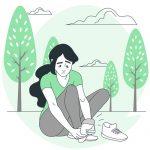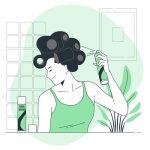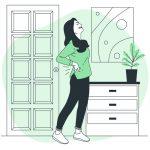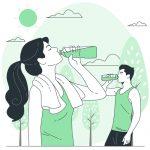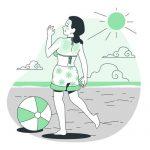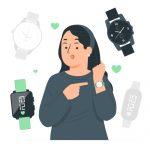
Opening
Varicose and spider veins are a common problem for women, affecting almost 50% of the population. The unsightly, swollen and twisted veins often appear on the legs and other parts of the body and can be quite a nuisance. They may appear as dark, twisted, or bulging veins on the legs, thighs, or ankles. While both conditions may appear similar, there are significant differences between the two In this blog post, we will discuss the difference between varicose and spider veins, as well as their causes, treatments, and prevention in women. We’ll also look at how to treat varicose and spider veins in women, and provide some interesting facts about the condition. So if you’re looking for more information on varicose and spider veins and how to treat them, read on!
The Difference Between Varicose & Spider Veins
Varicose veins and spider veins are two of the most common vascular conditions that women face today. Both conditions cause the veins in the legs to become enlarged, visible and unsightly. However, there are significant differences between the two.
The difference between Varicose and spider veins is that Varicose veins are typically larger than spider veins, and are often bulging and twisted, whereas spider veins are much smaller and appear as thin, red or blue lines just beneath the skin. Varicose veins are also more likely to cause pain and discomfort, whereas spider veins are typically painless.
Another difference between the two is the underlying causes. Varicose veins are often caused by weak or damaged valves in the veins, which can cause blood to pool in the legs. This is why people who spend long periods of time standing or sitting are at a higher risk of developing varicose veins. In contrast, spider veins are often caused by sun exposure, hormonal changes during pregnancy, and genetics.
Despite the differences between the two, the treatments for both are similar. Compression stockings can help improve circulation and reduce swelling in both varicose and spider veins. Lifestyle changes such as exercise and weight management can also help reduce symptoms. In more severe cases, medical procedures such as sclerotherapy and laser therapy may be necessary to treat the affected veins.
Ultimately, prevention is the key to avoiding both conditions. Eating a healthy diet, staying active, and wearing supportive footwear can help prevent the onset of both varicose and spider veins. Regular checkups with a vascular specialist can also help catch any potential issues early on, so that they can be addressed before they become more serious.
The Causes of Varicose Veins

Varicose veins can be caused by various factors such as age, genetics, hormonal changes, pregnancy, and obesity. When we age, our veins can lose their elasticity, making it harder for them to function properly. Genetics can also play a role, as some people may be predisposed to develop varicose veins due to a family history.
Hormonal changes, such as those that occur during puberty, menopause, and pregnancy, can also lead to varicose veins. During pregnancy, the growing uterus can put pressure on the veins in the legs, which can cause blood to pool and veins to stretch. This is why pregnant women are more likely to develop varicose veins than non-pregnant women.
Lastly, being overweight or obese can put added pressure on the veins in the legs, which can lead to varicose veins. This is because excess weight can cause the veins to work harder to pump blood back to the heart. Therefore, maintaining a healthy weight through proper diet and exercise can be an effective way to prevent varicose veins.
Overall, it is important to understand the causes of varicose veins so that we can take steps to prevent them. This includes maintaining a healthy weight, exercising regularly, avoiding prolonged periods of standing or sitting, and wearing compression stockings if necessary. By taking these preventive measures, women can help reduce their risk of developing varicose veins and improve their overall leg health.
The Treatment of Varicose Veins
When it comes to the treatment of varicose veins, there are several options available depending on the severity of the condition. The most common treatment options include lifestyle changes, compression stockings, sclerotherapy, laser treatments, and surgical procedures.
Lifestyle changes can be one of the most effective ways to prevent and treat varicose veins. For women, this can include maintaining a healthy weight, avoiding high heels and tight clothing, and engaging in regular exercise.
Compression stockings are a non-invasive treatment option that can help improve blood flow and reduce the appearance of varicose veins. These stockings work by providing a gentle pressure on the legs and improving circulation.
Sclerotherapy is a minimally invasive procedure that involves injecting a solution directly into the affected vein. This solution causes the vein to collapse and eventually disappear. Laser treatments work in a similar way, using a high-powered laser to destroy the affected vein.
In more severe cases, surgical procedures such as vein stripping or ligation may be necessary. These procedures involve removing the affected vein through a small incision or tying off the vein to prevent blood flow.
Regardless of the treatment option chosen, it is important to discuss your options with a qualified healthcare provider. With proper care and treatment, varicose veins can be managed and even prevented.
The Prevention of Varicose Veins
Preventing varicose veins is an important part of keeping your legs healthy and beautiful. Here are some effective ways to keep your legs free from varicose veins:
1. Maintain a Healthy Weight:
Obesity and being overweight put extra pressure on the veins in your legs. This can lead to the development of varicose veins. Therefore, it’s important to maintain a healthy weight by following a healthy diet and exercising regularly.
2. Avoid Sitting or Standing for Long Periods:
Sitting or standing for prolonged periods can restrict blood flow to your legs and put extra pressure on your veins. Therefore, it’s essential to take regular breaks and move around frequently.
3. Wear Compression Stockings:
Compression stockings can help improve blood flow in your legs and reduce the risk of developing varicose veins. These stockings are specially designed to provide pressure on your legs, which improves circulation.
4. Exercise Regularly:
Regular exercise can improve blood circulation and reduce the risk of developing varicose veins. Simple exercises such as walking, jogging, cycling, or swimming are great for your legs.
5. Elevate Your Legs:
Elevating your legs above your heart level can help improve blood flow in your legs and reduce the risk of developing varicose veins. Try to elevate your legs whenever possible, especially after long periods of standing or sitting.
The Causes of Spider Veins

pider veins, much like varicose veins, are a common occurrence for women. However, the causes of spider veins are slightly different than those of varicose veins.
One of the main causes of spider veins is genetics. If your mother or grandmother had spider veins, there’s a chance you may develop them too. Other causes include hormonal changes, such as during pregnancy or menopause, as well as prolonged standing or sitting. This is why jobs that require long periods of standing or sitting, such as nursing or office work, may increase the likelihood of developing spider veins.
Some medications can also cause spider veins, as can certain medical conditions such as obesity or a history of blood clots. Interestingly, exposure to sunlight can also play a role in the development of spider veins, so be sure to use sunscreen if you plan on spending time outside.
If you’re looking to prevent spider veins, the best course of action is to stay active and avoid sitting or standing for long periods of time. If you have a job that requires standing or sitting, make sure to take breaks and move around periodically. Compression stockings can also be worn to improve circulation and prevent the formation of spider veins.
While spider veins may be unsightly, they are generally not harmful. However, if you’re experiencing pain or discomfort as a result of your spider veins, treatment options are available. These include sclerotherapy, which involves injecting a solution into the vein to cause it to close, as well as laser treatments.
Remember, if you’re concerned about your spider veins or experiencing any discomfort, be sure to speak with your doctor to determine the best course of action.
The Treatment of Spider Veins
While spider veins may not be as severe as varicose veins, they can still cause discomfort and embarrassment for women. Fortunately, there are various treatments available to help reduce the appearance of spider veins and prevent further development.
One common treatment for spider veins is sclerotherapy. This procedure involves injecting a solution directly into the affected veins, which causes them to collapse and eventually fade away. Another treatment option is laser therapy, which uses intense beams of light to heat up and destroy the spider veins.
In addition to medical treatments, there are also some lifestyle changes that can help with spider veins. For example, wearing compression stockings can improve blood flow and prevent the development of new spider veins. Exercising regularly and maintaining a healthy weight can also help reduce pressure on the veins.
It’s important to note that while treatments can help improve the appearance of spider veins, they may not completely eliminate them. Additionally, there is no surefire way to prevent spider veins from developing altogether. However, taking steps to maintain healthy circulation and avoiding prolonged periods of sitting or standing can help reduce the likelihood of developing spider veins.
Overall, if you are experiencing discomfort or self-consciousness due to spider veins, it’s worth exploring your treatment options and discussing them with your healthcare provider. With the right combination of medical treatments and lifestyle changes, you can find relief and improve the appearance of your skin.
The Prevention of Spider Veins
Just like with varicose veins, the best way to prevent spider veins is to maintain a healthy lifestyle. This includes staying active, maintaining a healthy weight, and avoiding prolonged periods of sitting or standing. Here are some other ways to prevent spider veins:
1. Wear compression stockings – These special stockings apply pressure to the legs and can help improve circulation, preventing spider veins.
2. Elevate your legs – Elevating your legs above your heart for a few minutes each day can help improve blood flow and prevent spider veins.
3. Don’t cross your legs – Crossing your legs can restrict blood flow and contribute to spider veins. Try to keep your legs uncrossed when sitting.
4. Avoid high heels – Wearing high heels can put extra strain on your legs, making it more difficult for blood to circulate properly. Opt for comfortable shoes with good arch support instead.
5. Stay hydrated – Drinking plenty of water can help improve circulation and prevent spider veins.
Remember, prevention is key when it comes to spider veins. By making small changes to your lifestyle, you can help reduce your risk of developing spider veins and keep your legs looking their best.
Interesting & Fun Facts
1. Did you know that women are more likely to develop varicose and spider veins than men? This is due to hormonal changes, pregnancy, and wearing high heels or tight clothing that can restrict blood flow.
2. Varicose veins can appear in any part of the body, but they usually occur in the legs because of the pressure exerted on them by the weight of the body. Spider veins, on the other hand, tend to appear in the face, legs, and arms.
3. Treatment options for varicose veins include laser therapy, endovenous ablation, sclerotherapy, and vein stripping. Meanwhile, treatment for spider veins involves sclerotherapy, laser therapy, and intense pulsed light therapy.
4. Preventing varicose veins can be as simple as maintaining a healthy weight, wearing compression stockings, and engaging in physical activity. For spider veins, wearing sunscreen can help prevent them from appearing.
5. Did you know that one of the causes of spider veins is genetics? If your family members have spider veins, you are more likely to develop them as well.
6. Exercise can be an effective treatment and prevention strategy for both varicose and spider veins. By increasing blood flow, exercise can help improve vein function and prevent the appearance of new veins.
7. Another interesting fact is that pregnancy can cause both varicose and spider veins due to the increased pressure on the veins in the pelvic area. This pressure can cause blood to pool in the veins, leading to the appearance of unsightly veins.
Wrap-up
If you are a woman, Varicose/Spider Veins: Causes, Treatement & Prevention should be on your radar. By understanding the causes, treatments, and prevention methods for these conditions, you can protect yourself and minimize the appearance of unsightly veins. Some key takeaways include exercising regularly, maintaining a healthy weight, and elevating your legs when sitting for long periods. If you already suffer from varicose or spider veins, consider speaking with a specialist to explore treatment options such as laser therapy or sclerotherapy. Remember, early intervention can lead to better outcomes and improved quality of life. Taking care of your veins is just another way to prioritize your overall health and well-being, so make it a priority today!










